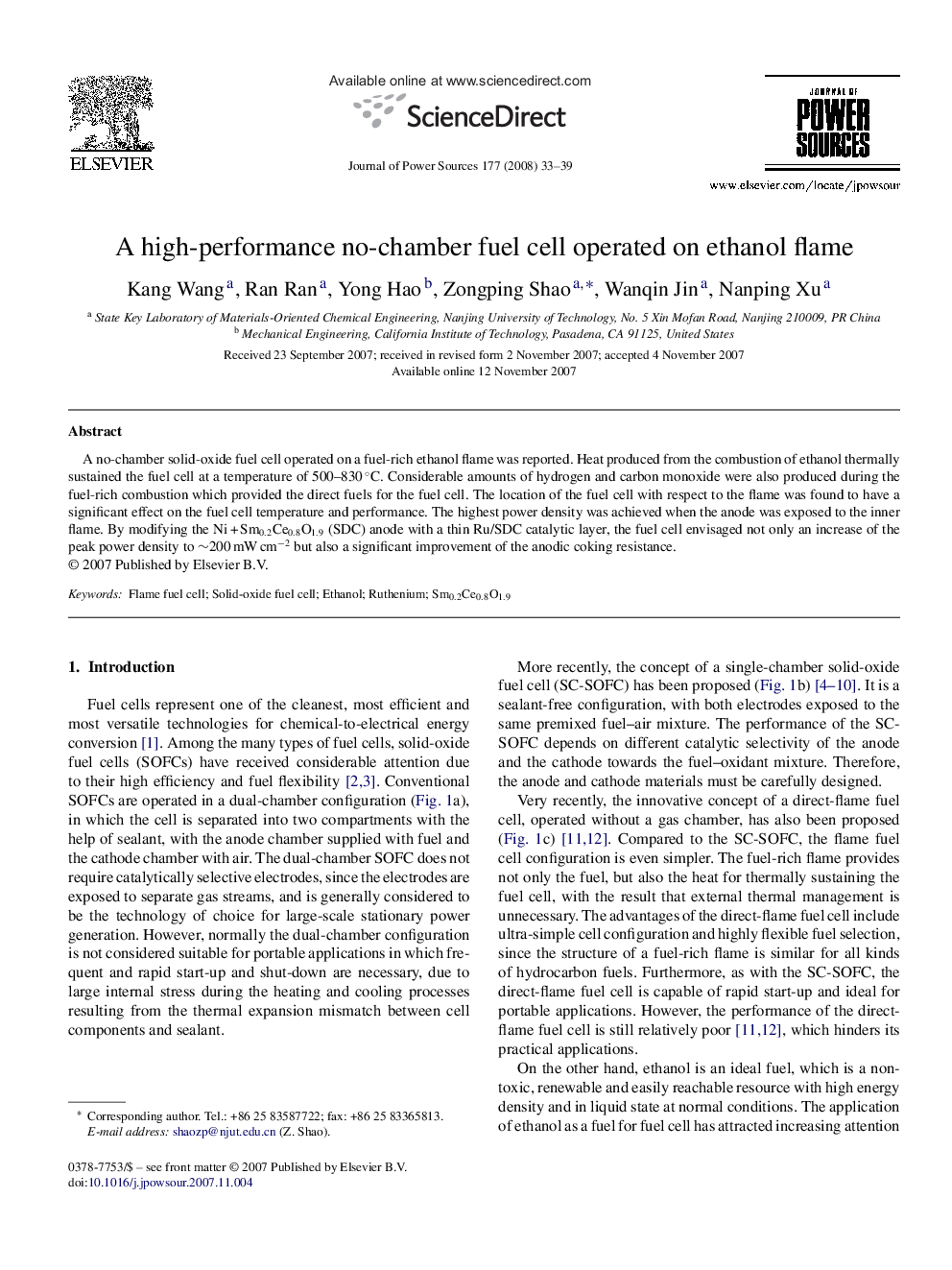| Article ID | Journal | Published Year | Pages | File Type |
|---|---|---|---|---|
| 1285682 | Journal of Power Sources | 2008 | 7 Pages |
A no-chamber solid-oxide fuel cell operated on a fuel-rich ethanol flame was reported. Heat produced from the combustion of ethanol thermally sustained the fuel cell at a temperature of 500–830 °C. Considerable amounts of hydrogen and carbon monoxide were also produced during the fuel-rich combustion which provided the direct fuels for the fuel cell. The location of the fuel cell with respect to the flame was found to have a significant effect on the fuel cell temperature and performance. The highest power density was achieved when the anode was exposed to the inner flame. By modifying the Ni + Sm0.2Ce0.8O1.9 (SDC) anode with a thin Ru/SDC catalytic layer, the fuel cell envisaged not only an increase of the peak power density to ∼200 mW cm−2 but also a significant improvement of the anodic coking resistance.
